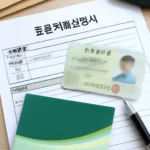Have you thought about opening a bank account for your child? Learn the step-by-step process of preparing for an elementary school account, from bankbook preparations to selecting the right account. Why should you open an account for your child early, and how does it set the stage for financial literacy?
Opening a bank account for an elementary school student is not only a simple process, but it’s also an important first step in teaching financial responsibility and literacy. Many parents might wonder how to begin, and what needs to be prepared to ensure the best start for their children. In this guide, we’ll walk through the essential steps of bankbook preparation, opening the account, and providing valuable insights into the advantages of setting up a financial account for young children.
Bankbook Preparations: The Essentials for a Smooth Start
Opening a bank account for an elementary school student can seem like a daunting task, but with a bit of preparation, it can be a straightforward process. One of the first things you’ll need is a bankbook or passbook, which will be used to track your child’s deposits, withdrawals, and account balance.
The preparation phase is all about gathering the right documents and understanding the features that are available for minors. Some banks offer special accounts designed specifically for children, which often come with a bankbook to make the experience even more tangible and educational.
What Documents Are Needed for Opening a Bank Account?
To open an account for your child, you’ll need a few essential documents:
-
Proof of Identity This can be your child’s birth certificate or another form of ID that verifies their age.
-
Parent or Guardian Identification The parent or guardian opening the account will need to provide identification, such as a driver’s license or passport.
-
Proof of Address A utility bill or bank statement with your name and current address is often required.
-
Parental Consent Since your child is a minor, you’ll need to provide consent for them to hold a bank account.
Understanding Bankbooks and Their Features
A bankbook is more than just a ledger; it’s a tangible way to track your child’s financial growth. When setting up a bank account for a child, it’s crucial to check if the bankbook will have features that help foster learning:
-
Transaction records Each deposit or withdrawal is written in the book, teaching children the value of savings and the impact of withdrawals.
-
Interest accumulation Many accounts offer small interest rates, which help teach the concept of compound interest to young minds.
-
Interactive learning tools Some banks offer additional educational resources with their accounts, which can teach kids basic money management skills.
By ensuring that your child’s bankbook is properly prepared and functional, you can start building a solid foundation for their financial knowledge.
Opening the Elementary School Student Account: A First Step Toward Financial Literacy
Opening a bank account is a significant milestone in a child’s life, and it serves as a great introduction to the concept of money management. Many parents choose to open a children’s bank account as a way to teach responsibility and the importance of saving.
Once you’ve gathered the necessary documents, the process of opening an account can be quick and easy, depending on the bank’s policies. It’s important to remember that children’s accounts are usually designed to be simple and accessible, with low fees and manageable features.
Key Features of Children’s Bank Accounts
A children’s bank account typically has several unique features:
-
No minimum balance requirements Many children’s accounts don’t require a high minimum balance, making it easier for families to start saving.
-
Parental control options As the account holder, you can often set limits on withdrawals or monitor the account activity, ensuring your child learns healthy financial habits.
-
Debit cards for kids Some accounts offer a debit card with limits and parental controls, which can help your child learn to spend responsibly while offering you peace of mind.
The Role of Parents in Managing the Account
Even though the account is in your child’s name, parents play a crucial role in helping them manage it. This is where you can teach lessons about saving, budgeting, and making thoughtful financial decisions. Setting up automatic transfers for savings or creating a goal (such as saving for a toy or an experience) can help your child understand the importance of budgeting and setting financial goals.
Creating an Elementary School Account: The Long-Term Benefits
Opening an elementary school account is not just about setting up a basic savings tool; it’s an investment in your child’s future. Children who are introduced to money management at an early age tend to develop stronger financial habits as they grow older. By involving your child in the process, you are setting the stage for them to develop essential skills that will serve them well into adulthood.
The Benefits of an Early Start
-
Developing Financial Responsibility Managing their own account helps kids become more aware of their financial choices.
-
Introducing Saving Habits Encouraging your child to save a portion of their allowance or earnings will help them build a strong habit for saving money.
-
Understanding the Value of Money Children learn how their money grows and the importance of careful spending.
-
Building Credit History Early While your child may not immediately qualify for credit, having a bank account in their name can help them build a positive credit history over time.
How You Can Support Their Financial Education
You can actively participate in your child’s learning by discussing their bank account statements with them and setting realistic savings goals. Use the bankbook to explain how deposits are made and what expenses or purchases are being paid for with their account.
Creating an elementary school account sets your child up for success as they move into their teenage years and beyond. By encouraging them to take ownership of their account, they will build a sense of pride and responsibility.
Learn More About Teaching Kids About Money
Conclusion
Opening a bank account for your elementary school child is a meaningful way to introduce them to financial literacy. From bankbook preparations to creating a children’s account, this process allows kids to start understanding the basics of money management in a real-world context. With the right tools and support from parents, children can learn the value of saving and spending wisely. Not only does this set the foundation for a future of financial responsibility, but it also provides your child with a valuable life skill that they’ll carry with them forever.
“An investment in knowledge always pays the best interest.” — Benjamin Franklin. Opening an account for your child today can help them reap the rewards of financial literacy for years to come.






